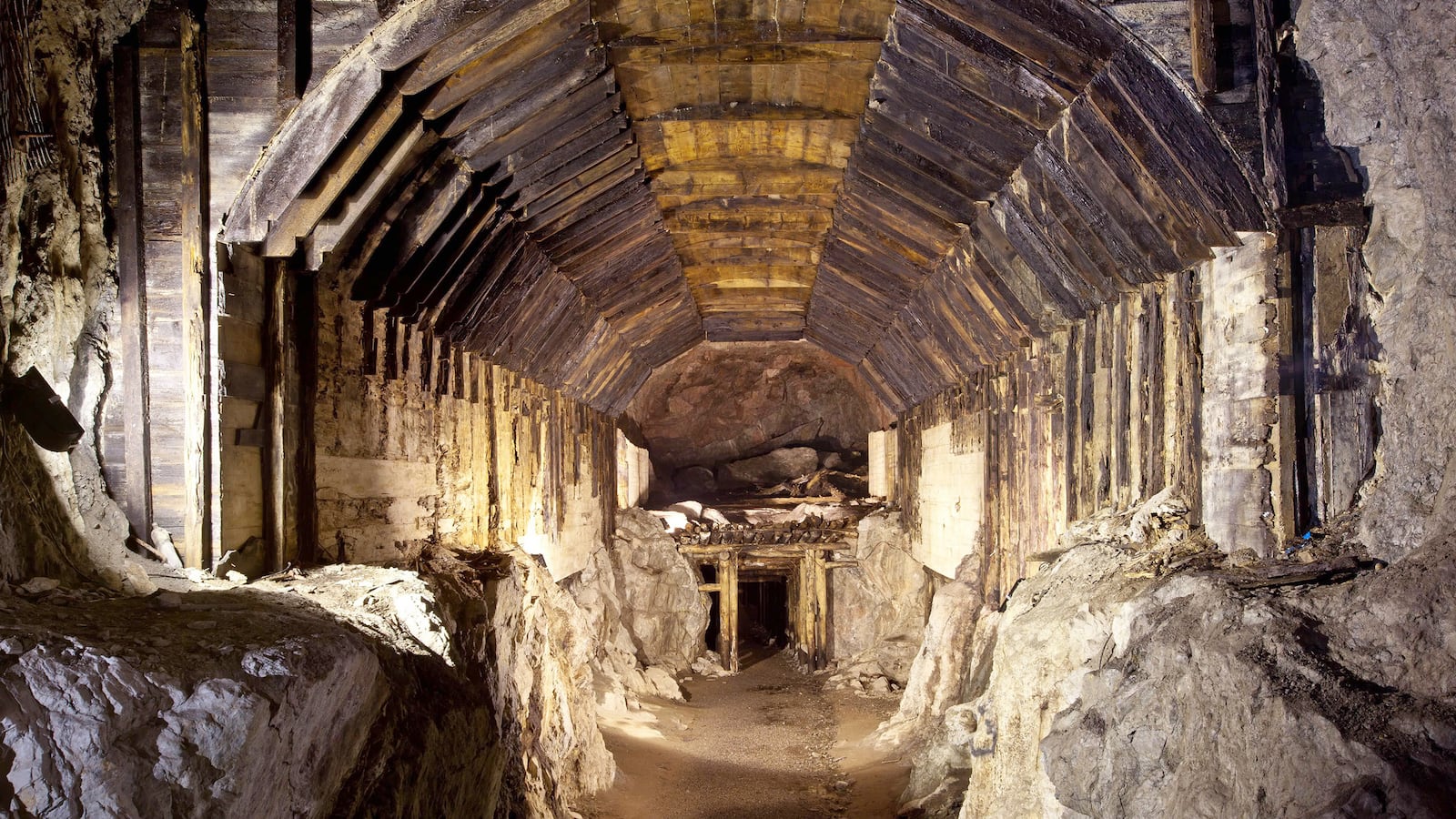WARSAW — Seven decades after the end of World War II, some secrets remain buried. Among these is a legendary train full of gold, abandoned by the Nazis and—some believe—still hidden in the southwestern corner of Poland. Over the years, it has captured the imaginations generations of treasure hunters but never been discovered. Now two men claim to have found it, and are demanding a share of the bounty.
The story begins ’round about early 1945. By then, the Red Army was getting dangerously close and Nazi Germany knew that it was all over. In a panic, several tons of gold held in the German city of Breslau (now Wrocław, Poland) was packed into a train and sent out of the city. Some Polish accounts suggest that it also contained the famous “Amber Room” of Frederick I of Prussia, which disappeared during World War II.
The train never reached its destination, though. It went missing in mysterious circumstances in southwestern Poland. Some versions point to Sobiesz, a mountain in the area, others to the railway line near Wałbrzych, a nearby city.
With its tree-covered hills and fairy-tale castles, Poland’s southwestern region of Lower Silesia, which was part of Germany until 1945, provides a fertile setting for these kinds of tales. And this story has all the makings of an adventure movie featuring Nazi treasure, vanishing trains, and underground tunnels.
With two men claiming to know where the train is, the mystery could be unearthed at last. The unnamed duo, a Pole and a German, sent a letter to the local authorities in Wałbrzych via a law firm. Their alleged discovery was no accident. An anonymous source who knows the men told the regional edition of Gazeta Wyborcza that they spent several years searching for it. That is hardly surprising; at its deepest part, the train is buried 70 meters underground, he added.
The catch: The men will not reveal the train’s whereabouts unless they are guaranteed 10 percent of the value of whatever is found inside. By law, the train and its contents are the state treasury’s property.
Nothing proves that this is actually the “gold train” from the legend. Still, people have put 2 and 2 together and the excitement is spreading.
Part of the reason is that so many others have looked for the train before—and failed.
Few have been as determined as Władysław Podsibirski, an entrepreneur whose treasure-hunting exploits in the area go back decades. In the mid-1990s, he even got the Polish government involved. “We were sincerely counting on those revelations proving to be true,” a retired secret service officer is quoted by wiadomosci24.pl, a news site. “The country was in a difficult situation then. Finding the treasure would have improved the state’s financial situation.” Once the government lost interest, Podsibirski returned to the area with private investors, with no result.
All this talk of buried trains is made more credible by that fact that there really is more to the surrounding landscape than meets the eye, with all sorts of secrets hidden deep beneath the boots of passersby. In 1943–1945, the Nazis started building a network of underground tunnels under the nearby Owl Mountains and Książ Castle. It was known as Project Riese, from the German word for “giant.” Construction, done by POWs, was never completed. The project’s exact purpose remains mysterious: It could have been built as part of the Third Reich’s arms industry, or may even have been meant to house headquarters for Hitler himself, some sources suggest.
These days, three of the seven main Riese sites are open to the public, but much of the complex remains unexplored. Theories about walled-up tunnels, large enough to hide the missing train, in the hillside abound.
All the same, local historians remain skeptical. “I don’t know of any confirmed account that states that these trains really existed,” Joanna Lamparska, a specialist on the history of Lower Silesia, told RMF24, a radio station.
And, even assuming that the men’s claim is based on genuine documents, there is considerable work ahead. “A big group of people would really need to sit down with them: a historian, a geologist, a cartographer, an engineer, a miner, a historian—so the matter is not that simple,” Lamparska added.
Still, locals hope that this will not be a false alarm. A gold-filled train would make Wałbrzych a household name internationally and draw crowds of tourists, some suggest. “The whole world is talking about the ‘golden train,’” a headline on local news website walbrzych24.com proclaims. And it is, though nothing has even been found yet.
According to the legal adviser representing the two men, they are serious. “What they presented during their conversation with me tells me to treat the whole matter as highly plausible,” Jarosław Chmielewski told Onet. So much for the train, but what about its contents? Chmielewski points out that his customers have a “purely rational” approach to the legend of the “golden train,” and are reluctant to raise people’s hopes before more is known about the train.
“People could be hit by an unhealthy fever,” Chmielewski said, adding that the rush of media attention is not helping.
In particular, it is unclear what the train might contain. The golden scenario is obviously the most alluring. But it could turn out to be empty, or downright dangerous. It might be mined or contain poisonous gas, the local authorities have suggested, calling locals’ safety the priority.
Something to bear in mind before setting off with one’s shovel in search of the train.






